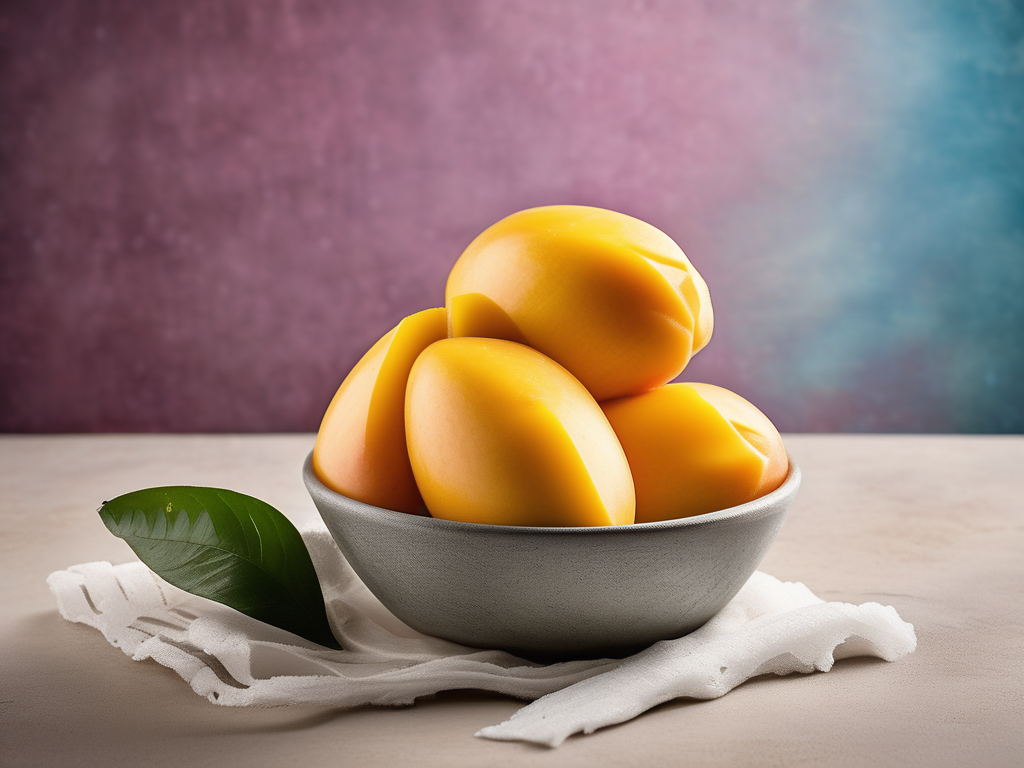
How to Properly Store Frozen Mango to Prevent Freezer Burn
Get Your Free Food Safety Cheat Sheet
30 most common foods with instant answers. Print it and stick it on your fridge—completely free!
How to Properly Store Frozen Mango to Prevent Freezer Burn
Frozen mango is a delicious and convenient way to enjoy this tropical fruit year-round. However, improper storage can lead to freezer burn, affecting the taste and texture of the mango. In this guide, we will explore how to properly store frozen mango to prevent freezer burn and maintain its quality. (Frozen mango)
Understanding Freezer Burn
Before diving into storage tips, it's essential to understand what freezer burn is and how it affects frozen mango. Freezer burn occurs when moisture in the food evaporates, leaving behind dry and discolored patches. While freezer burn doesn't pose a health risk, it can impact the taste and texture of the mango, making it less enjoyable to eat.
Signs of Freezer Burn on Mango
- Dry, white or grayish patches on the surface of the mango
- Changes in texture, such as a rubbery or tough consistency
- Loss of flavor intensity
Proper Storage Tips for Frozen Mango
To prevent freezer burn and preserve the quality of frozen mango, follow these storage tips:
1. Use Airtight Containers or Freezer Bags
- Transfer the frozen mango into airtight containers or resealable freezer bags to minimize exposure to air.
- Ensure the containers are specifically designed for freezer use to maintain freshness.
2. Remove Excess Air
- Squeeze out as much air as possible before sealing the containers or bags.
- Excess air can contribute to freezer burn, so eliminating it helps preserve the mango's quality.
3. Label and Date the Packages
- Clearly label the containers or bags with the date of freezing to keep track of freshness.
- Use a permanent marker to prevent the labels from smudging or fading over time.
4. Store at Proper Temperatures
- Keep the frozen mango at a consistent temperature of 0°F (-18°C) or below.
- Fluctuating temperatures can accelerate freezer burn, so maintain a stable freezer environment.
5. Organize the Freezer
- Arrange the frozen mango in a single layer to allow for even freezing and easier access.
- Avoid overcrowding the freezer to ensure proper airflow around the mango packages.
6. Rotate Stock Regularly
- Practice the "first in, first out" rule to use older batches of frozen mango before newer ones.
- This helps prevent the mango from staying in the freezer for extended periods, reducing the risk of freezer burn.
Additional Tips for Maintaining Frozen Mango Quality
In addition to proper storage practices, consider the following tips to maintain the quality of frozen mango:
- Blanch Before Freezing: To help preserve the mango's color and texture, blanch the fruit briefly in boiling water before freezing.
- Use Fresh Mango: Start with ripe, fresh mango when freezing to ensure the best flavor and quality.
- Avoid Thawing and Refreezing: To prevent moisture loss and potential freezer burn, avoid thawing and refreezing mango repeatedly.
Conclusion
Properly storing frozen mango is crucial to prevent freezer burn and maintain its delicious taste and texture. By following the tips outlined in this guide, you can enjoy flavorful mango all year round. Remember to use airtight containers, remove excess air, label packages, store at proper temperatures, organize the freezer, and rotate stock regularly to keep your frozen mango fresh and free from freezer burn.
For more information on frozen mango and other food storage tips, check out [frozen mango](/food/frozen mango). Happy freezing! (Frozen mango)
Related Posts
Here are some other articles you might find helpful:
Authoritative Food Safety References
These agencies and university labs inform every tip and health precaution we publish.
USDA FoodKeeper – Cold Storage Guidelines
Official refrigerator, freezer, and pantry timelines maintained by the U.S. Department of Agriculture.
Visit USDA FoodKeeperFDA Produce Safety Rule & Grower Guidance
Field-to-fridge handling practices that prevent contamination of fruits, vegetables, and leafy greens.
Visit FDA Produce SafetyCDC Foodborne Illness Prevention Hub
Surveillance-backed guidance on pathogens, symptoms, and steps to reduce foodborne illness risk.
Visit CDC Food SafetyUC Davis Postharvest Technology Center
University research detailing optimal storage atmospheres for produce after harvest.
Visit UC Davis PostharvestPenn State Extension – Home Food Preservation & Safety
Peer-reviewed extension bulletins on safe canning, chilling, and reheating practices.
Visit Penn State ExtensionGet Your Free Food Safety Cheat Sheet
30 most common foods with instant answers. Print it and stick it on your fridge—completely free! Want more? Upgrade to the complete guide with 70+ foods.
Scan your food directly and get instant safety info using our AI-powered camera feature.